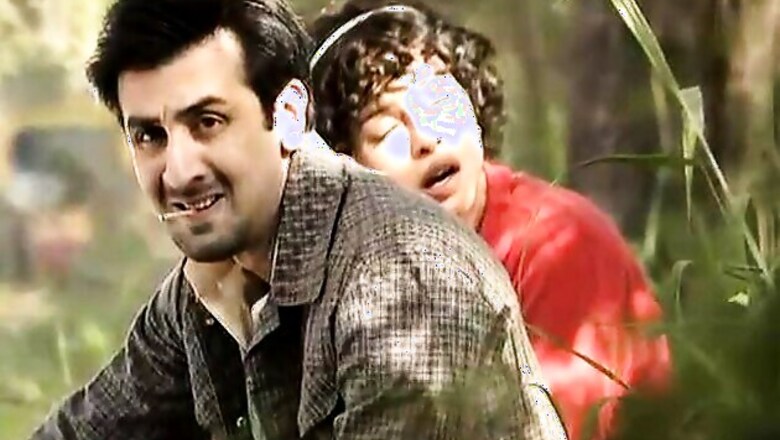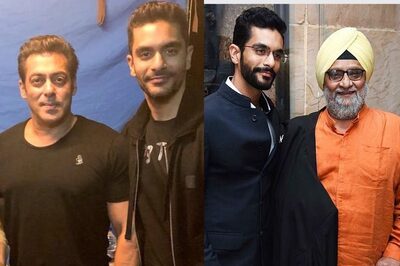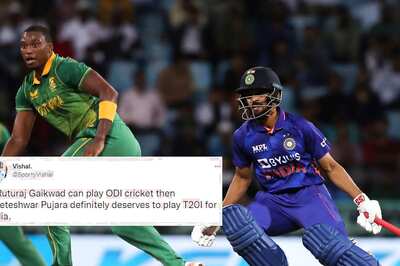
views
New Delhi: When last year’s most talked-about, admired and awarded film ‘The Artist’ was in its planning stage, it went through hell. Recalls its producer Thomas Langman, “Most of the meetings were very short. Each time we’d say the film is silent and in black and white, the guys would say ‘What’s your next project?’ In the end, I just put in my own money and …,” scooped up applause, accolade or awards galore!
Cut to the beginning of this year when Eastman Kodak filed for bankruptcy, serving notice to the impending death of celluloid as a movie medium. Writer Kalpana Nair put it beautifully when she wrote “As with every technology that is phased out, the obituaries grow more poignant. Greeting the new while mourning old comes with the territory.”
The main and central reason why nostalgia is bitter-sweet is because the original (claim the pundits) will never be resurrected. Same with black & white films, which everyone assumed had been sent to the ‘archival vaults’ forever. What they didn’t know was a tiny number of films are still using this format to “not only embrace its monochromatic appeal but also transcend it.”
Sudisish Kamath’s ‘Good Night Good Morning’ set in New York about strangers who have an extended conversation on the phone, on New Year’s Eve, is an example. While he confesses that he used the format to show “that old fashioned romance still exists”, the going was not easy. He publicly offered every ticket-buying member of the audience who didn’t like his movie a free cup of coffee and if desired, a brief interaction. The great Martin Scorsese was said to have shot a bit of his iconic 1980 ‘Raging Bull’ in colour, but switched tracks later. Steven Spielberg’s ‘Schindler’s List’ is another masterpiece that rocked, colourless “because the storyline and treatment demanded stark, raw colours of life best expressed through black & white.”
Recent quality films in India include Rituporno Ghosh’s ‘Dosor’ and the much talked about controversial film that has made an impressive impact in the global Film Festival circuit, but run into censor trouble in India due to sexually-explicit scenes, Kaushik Mukherjee’s ‘Gandu’. The director, cool as a cucumber and totally undisturbed by the ban in India confessed that he used the format because he “was fed up of colours and needed to get back to basics.”
Coming back to ‘The Artist’, it’s a tribute to Silent Cinema, which – as the Gurus have pointed out – was never silent; it just lacked sound! Described as “a generous, touching and slightly daffy expression of unbridled movie love” by The New York Times and set in the Hollywood of the late 20’s and early 30’s, this bitter-sweet, life-affirming movie’s astonishing tsunami of awards at the Oscars and overwhelming feedback from audiences all over, only proves that content, not colour, is the soul of any great film. Little wonder that ‘Raging Bull’ & ‘Schindlers List’, ‘Pather Panchali’ & ‘Mughal-e-Azam’, ‘Pyaasa’ & ‘Awara’ are still loved, remembered and re-visited with affection … and why when coloured versions were attempted on some old masterpieces (Mughal-e-Azam, Hum Dono), the magic disappeared. Little wonder too that the finest of Chaplin’s work – ‘Gold Rush’, ‘The Kid’ – were silent movies that spoke a million words.
The biggest take-out of last year’s Oscar however was simply this: Frequently they end up honouring almost-ignored, missed and overlooked films built on serendipity, intuition and leaps of faith. ‘The Artist’ was a clear example and reminder of how, even in “these technologically-advanced, cultural-fetish, manipulated and demographically parsed movie going era” narratives that are scripted from the heart, invariably find homes in other hearts.
So there is hope for our ‘Barfi!’.
####




















Comments
0 comment